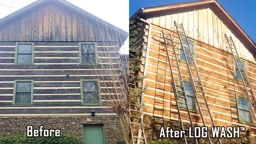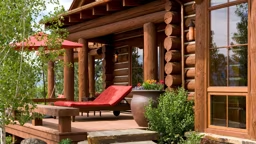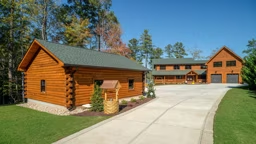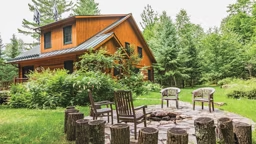
Have you heard of a ductless mini-split heating/cooling system? Don’t despair – many people in the United States haven’t. But with wildly fluctuating energy costs and an emphasis on reducing fossil-fuel consumption, conditioning your log home’s interior air, room by room, with mini-splits is not only conscientious and fiscally smart, it can solve a lot of headaches when it comes to locating your mechanicals.
We talked to two experts about the ins and outs of mini-splits.
How is a mini-split system different from a more commonly known central air/heat pump system, and how does it work?
“Mini-splits are completely ductless and separate. Think of it as having multiple HVAC units in your home,” explains Hearthstone Homes’ V.P. Chris Wood, who has been a proponent of this type of heating and cooling for years.“The days of having one large unit with a big return in the middle of your house are over. What’s going on now is you have a larger one in the living room, a small one in the master bath, a small one near the kitchen area, et cetera. You can control each room’s humidity and temperature individually — not relying on just one thermostat for the house.”
Roy Kuczera, senior vice president of sales for mini-split manufacturer Fujitsu, explains the technical workings further: “The inverter technology of a mini-split allows it to ramp up or down to deliver just the capacity required at any given time, verses having it run full tilt only to use a portion of the capacity and recycle the rest. This is what happens in a typical central-air ducted system, and it’s either on or it’s off. When it’s on and you’re only using part of it, it circles around in the ductwork; so your compressor is working hard, even if you’re not using it to the full capacity. In a mini-split, the variable-speed compressor slows the system down to deliver just the amount needed. It’s like cruise control for your air conditioning.”
If they’re ductless, where are they located?
“There are several different types of mini-split products,” Roy says. “There’s a floor-mounted unit, a wall-mounted unit, a mini-ducted unit to condition more than one room, a ceiling-suspended unit and a ceiling-cassette unit. You have a variety of options that are able to meet different needs of the space, since you won’t always be able to mount the unit on a wall, especially if your logs are curved.”
How to they vent?
“It depends,” says Chris. “If you’ve got a gas-fed mini-split system, you need to ensure it’s vented. But if it’s electric, it doesn’t need to vent. They all have to drain because they generate water like a typical HVAC unit, but an electric unit can run off of interior electrical lines.”Does the venting and/or water drainage present any problems in a log home?
“It could look ugly if it’s channeled out of a second floor and run down the gable, but you can run it through an interior wall and then outside,” suggests Chris. “In terms of interrupting the thermal envelope, it’s not a problem. The drain is about the size of your index finger and the condenser’s copper tubing is about 3 inches in diameter. So just two very small holes are required for drainage.”How many square feet will a typical unit condition?
“There are more considerations than just square footage,” Roy cautions. “A unit can put out as little as 7,000 BTUs on a multi-zone system or up to 48,000 BTUs (4 tons) with up to eight indoor units tied to one outside condenser. If you are looking for simple spot heating/cooling, you’d be talking about square feet per indoor unit. But if you’re looking at this for whole-home indoor conditioning, then you’re not only looking at how many square feet the building is, but also evaluating the load of glass in the home (like a large wall of windows). These considerations can dramatically affect the load for the space.”Can mini-splits be used as the primary heating/cooling source for a home, not just supplementary to a traditional ducted central-air system?
According to Roy, it can serve as your primary HVAC if properly sized. “We have units that can provide sufficient heating in climates that drop to -15 degrees,” he says. “As long as your ambient temperature doesn’t drop below -15, a mini-split can provide ample heat for the space.” For a log home, Chris offers this advice: “I find that a mini-split in conjunction with a regular HVAC unit, not instead of it, works best when you have a large, sprawling house, but you can use it as a primary source in a small cabin. They will be less expensive and more efficient. They’re also a perfect solution for log additions, enclosed porches and sunrooms where you want to heat or cool a space but it’s too late or cost-prohibitive to run ductwork.”










